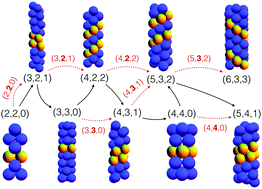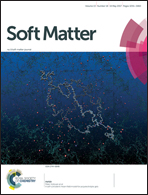Assembly of hard spheres in a cylinder: a computational and experimental study
Abstract
Hard spheres are an important benchmark of our understanding of natural and synthetic systems. In this work, colloidal experiments and Monte Carlo simulations examine the equilibrium and out-of-equilibrium assembly of hard spheres of diameter σ within cylinders of diameter σ ≤ D ≤ 2.82σ. Although phase transitions formally do not exist in such systems, marked structural crossovers can nonetheless be observed. Over this range of D, we find in simulations that structural crossovers echo the structural changes in the sequence of densest packings. We also observe that the out-of-equilibrium self-assembly depends on the compression rate. Slow compression approximates equilibrium results, while fast compression can skip intermediate structures. Crossovers for which no continuous line-slip exists are found to be dynamically unfavorable, which is the main source of this difference. Results from colloidal sedimentation experiments at low diffusion rate are found to be consistent with the results of fast compressions, as long as appropriate boundary conditions are used.


 Please wait while we load your content...
Please wait while we load your content...